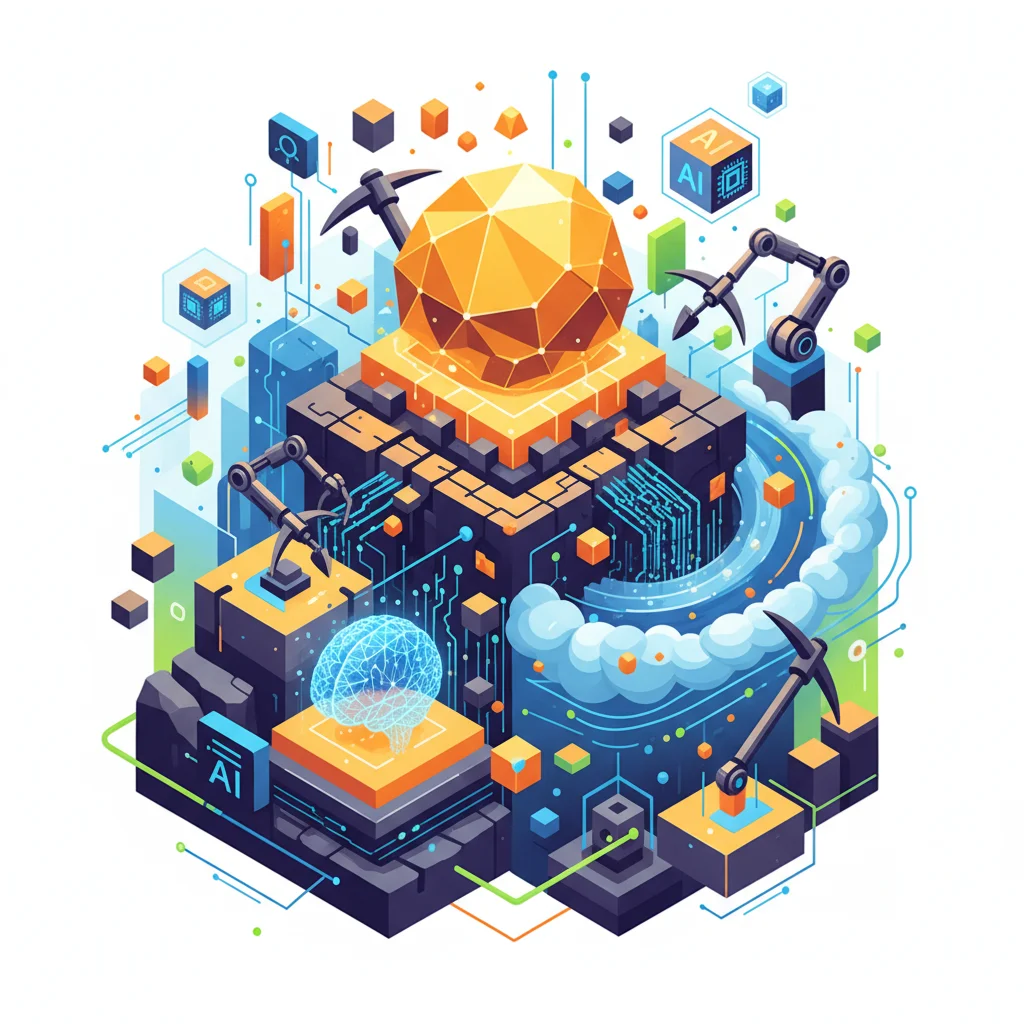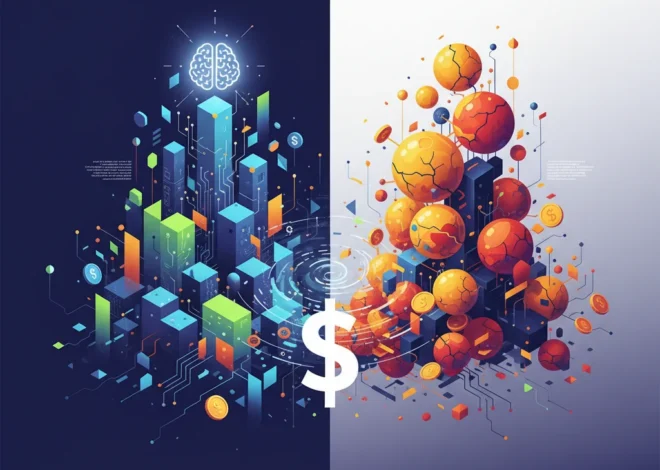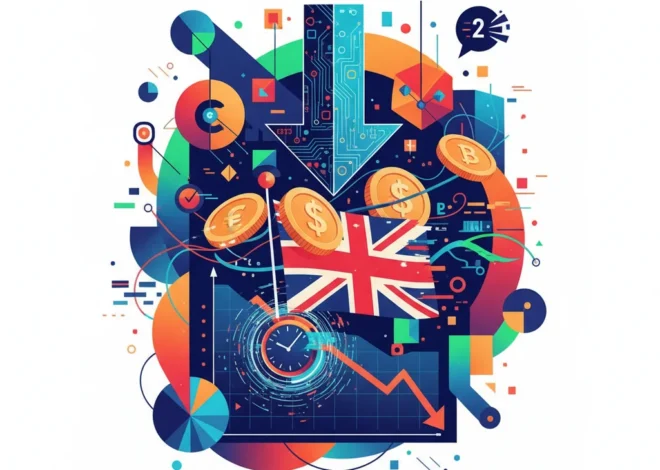
The AI Gold Rush: Are We Building on Bedrock or a Bubble?
We’re living through an extraordinary moment in technology. The term “Artificial Intelligence” has escaped the confines of sci-fi and research labs to become the two most important letters in every boardroom, pitch deck, and earnings call. Companies are scrambling, investing billions to stake their claim in the new digital frontier. This isn’t just a trend; it’s a seismic shift, a full-blown gold rush. But as the dust settles from the initial frantic sprint, a crucial question is starting to echo through the halls of finance: are we spending too much, too fast?
The architects of capital, the fund managers who control trillions of dollars, are beginning to sound the alarm. A recent, eye-opening survey from Bank of America reveals a startling sentiment: a majority of global fund managers now believe that corporations are over-investing in AI infrastructure. This isn’t some fringe opinion; it’s a growing consensus among the very people who analyze market fundamentals for a living. They’re looking at the colossal checks being written for GPUs, cloud services, and R&D and asking a simple, yet profound question: where’s the ROI?
This blog post dives deep into this growing concern. We’ll unpack what this sentiment means for the entire tech ecosystem—from developers and startups to established SaaS giants. Is this the prudent caution of experienced investors, or are they failing to grasp the scale of the coming AI-powered revolution? Let’s explore the boom, the bubble warnings, and what might come next.
The Anatomy of the AI Spending Spree
To understand the investors’ anxiety, we first need to grasp the sheer scale of the spending. The current AI boom is built on a foundation of immense computational power. This isn’t just about clever software; it’s about the raw, brute-force hardware and infrastructure required to train and run today’s powerful machine learning models. The spending is concentrated in a few key areas:
- GPU Arsenals: At the heart of the boom is the Graphics Processing Unit (GPU), with Nvidia as the undisputed king. Companies are buying tens of thousands of these high-powered chips, which are uniquely suited for the parallel processing required by AI algorithms. This hardware acquisition represents a massive capital expenditure (CapEx).
- Cloud Infrastructure: For companies that don’t want to build their own data centers, the big three cloud providers—Amazon Web Services, Microsoft Azure, and Google Cloud—are the go-to solution. They offer AI-as-a-service platforms, allowing startups and enterprises to rent computational power. This shifts the spending from CapEx to a significant operational expenditure (OpEx).
- Talent & R&D: The race for AI talent is fierce. Top-tier machine learning engineers and researchers command astronomical salaries. Companies are also pouring billions into internal R&D to create proprietary models and applications, a necessary investment in long-term innovation.
According to the Bank of America survey, a striking 41% of fund managers now view corporate AI capital expenditure as “too high.” This is a significant shift in sentiment, suggesting that the initial blank-check enthusiasm is giving way to a more critical, ROI-focused analysis. The concern is that companies are engaged in a costly arms race for computational power without a clear, corresponding strategy for monetization.
AI vs. a £7 Million Ad: The Christmas Commercial That Changed Marketing Forever
Echoes of Bubbles Past: Is History Repeating Itself?
For anyone who has been in the tech industry for more than a decade, this scenario feels eerily familiar. The frenzied investment, the “change the world” rhetoric, and the sky-high valuations are reminiscent of the dot-com bubble of the late 1990s. Back then, the mantra was “get big fast,” and the key metric was “eyeballs,” not profits. Today, it’s about “model parameters” and “compute capacity.”
However, drawing a direct parallel is an oversimplification. There are crucial differences this time around. Let’s compare the two eras.
Here’s a breakdown of the similarities and differences between the two tech booms:
| Metric | The Dot-Com Boom (c. 1999) | The AI Boom (c. 2024) |
|---|---|---|
| Core Technology | The commercialization of the Internet | The commercialization of Generative AI & Large Language Models |
| Primary Investment Focus | Building out internet infrastructure (fiber optics), web portals, and e-commerce sites | Building out AI infrastructure (GPUs, data centers, cloud platforms) |
| Key Players | A mix of established players (Cisco, Microsoft) and thousands of unprofitable startups (Pets.com) | A handful of highly profitable tech giants (Nvidia, Microsoft, Google, Amazon) and well-funded startups (OpenAI, Anthropic) |
| Market Narrative | “The internet changes everything; profits will come later.” | “AI changes everything; productivity gains will justify the cost.” |
| Primary Risk | Massive overvaluation of companies with no viable business model. | Massive concentration of capital in infrastructure before widespread, profitable applications are proven. |
The most significant difference is who is doing the spending. In the dot-com era, a lot of the speculative investment was in new, unproven startups going public with little more than a business plan. Today, the biggest spenders are some of the most profitable companies in history. Microsoft isn’t going to go bankrupt buying GPUs for its Azure cloud. This suggests that while individual AI startups might fail, the underlying infrastructure players are on much more solid ground.
My prediction is that we’re about to see a “Great Application Squeeze.” The infrastructure players (Nvidia, AWS, Azure) will capture a huge portion of the value. The next layer down—the foundational model makers like OpenAI—will also command a premium. But the thousands of startups building thin “AI wrappers” or simple applications on top of these models will face immense pressure. Their success will depend entirely on their ability to solve a specific business problem so effectively that customers are willing to pay a significant margin on top of the underlying AI costs. The focus must shift from technological novelty to ruthless, demonstrable business value. The era of “build a cool demo and get funded” is rapidly coming to a close.
Implications for the Entire Tech Ecosystem
This shift in investor sentiment isn’t just a Wall Street headline; it has real-world consequences for everyone in the technology landscape.
For Developers and Tech Professionals
The demand for talent in machine learning, data science, and AI-centric programming remains incredibly high. However, the nature of the work might shift. There will be a premium on engineers who can not only build models but also optimize them for efficiency. Reducing computational cost will become as important as increasing accuracy. Furthermore, developers should be wary of joining “hype-driven” startups with no clear path to profitability. The most secure and rewarding careers will be with companies that are applying AI to solve tangible problems in sectors like finance, healthcare, and cybersecurity.
For Entrepreneurs and Startups
The message is clear: the bar is getting higher. Venture capitalists, echoing the concerns of public market investors, will increasingly demand more than just a powerful model. They’ll want to see a clear business model, customer traction, and a defensible moat. Competing on raw model performance is a losing game for startups; the tech giants will always have more data and more compute. The winning strategy lies in vertical integration—becoming the indispensable AI tool for a specific industry—or in creating novel user experiences that the incumbents can’t easily replicate. True innovation will be found in the application layer, not the infrastructure race.
The AI Gold Rush Hits a Reality Check: Why Wall Street’s “Boring” Money is Getting Nervous
For the Software and SaaS Industry
The pressure to integrate AI features is immense. Every SaaS platform is now expected to have its own “Copilot.” However, this comes with significant costs and risks. Simply being a wrapper around a third-party API is not a sustainable business model. Companies need to think about how artificial intelligence can fundamentally enhance their core product, create new workflows, and deliver a 10x improvement in user experience. This is a moment of both great opportunity and existential threat. The companies that successfully weave automation and intelligence into the fabric of their products will thrive, while those that merely sprinkle on some AI pixie dust will be left behind.
The Case for Optimism: Why This Isn’t a Bubble
Despite the valid concerns, it’s important to consider the powerful arguments against the bubble thesis. Many seasoned technologists and investors believe the current spending is not just justified but necessary.
First, this isn’t just an incremental improvement; it’s a platform shift on par with the internet and mobile. When you are building the foundations for a new era of computing, the initial investment is naturally going to be enormous. The productivity gains unlocked by widespread AI automation could be so massive that they dwarf the initial infrastructure costs, delivering a societal ROI that is hard to model today.
Second, as mentioned earlier, the primary investors are cash-rich behemoths. This isn’t speculative debt fueling the boom; it’s the R&D budget of the world’s most successful companies. They are playing a long game, and as one analyst quoted in the FT article notes, this spending could peak soon as the initial infrastructure is built out, leading to a “digestion phase” (source).
Finally, we are already seeing real-world value. From drug discovery and materials science to hyper-personalized customer service and advanced cybersecurity threat detection, AI is already solving problems that were previously intractable. The gap between investment and tangible results may be shorter than the skeptics believe.
The Verdict: A Necessary Reckoning
The warnings from fund managers shouldn’t be seen as a death knell for the AI revolution. Instead, they should be viewed as a healthy, necessary course correction. The initial phase of unrestrained hype and “spend at all costs” is ending. We are now entering a more mature, discerning phase where the focus will rightly shift from potential to performance.
The question is no longer “What can AI do?” but “What valuable problems can we solve with AI, and can we do it profitably?”
For everyone involved—investors, founders, developers, and business leaders—this is a call to action. The next 18-24 months will separate the enduring innovators from the temporary opportunists. The companies that thrive will be those that can demonstrate how their massive investment in cloud compute, software development, and raw talent translates into real, measurable value for their customers. The AI gold rush continues, but the prospectors are now being asked to show the gold.


